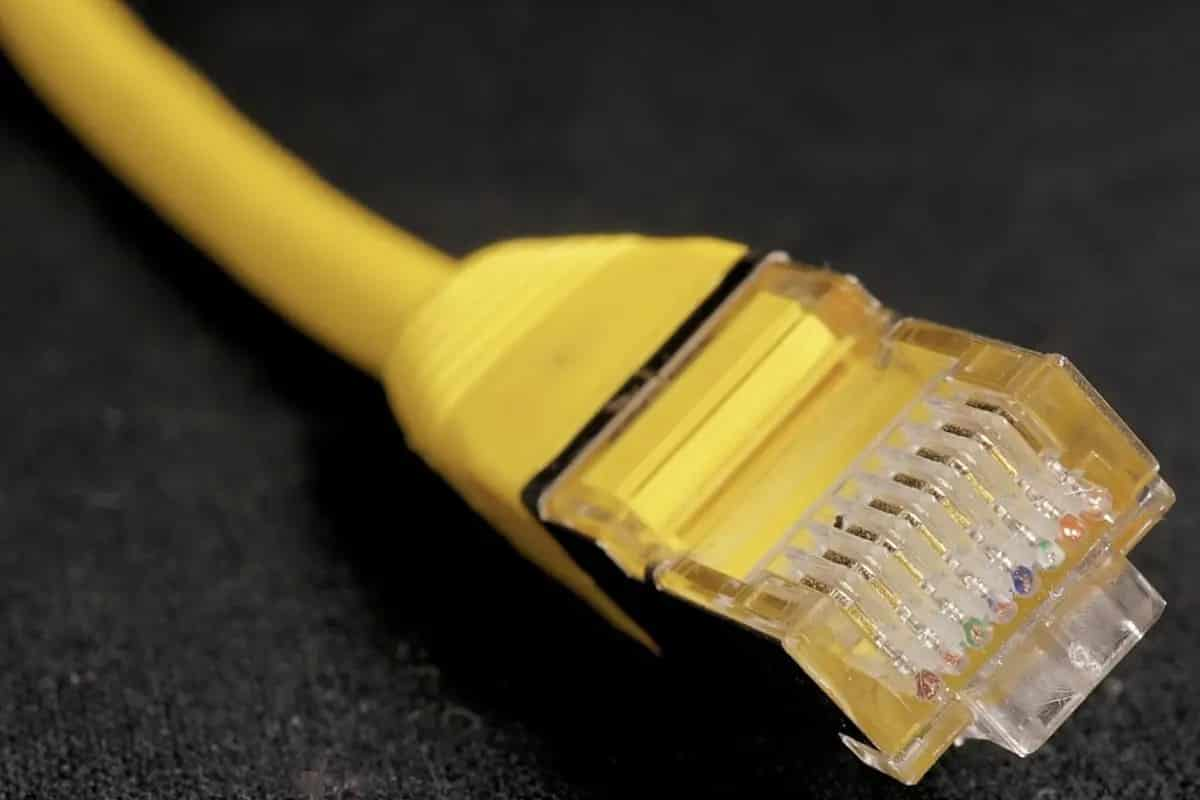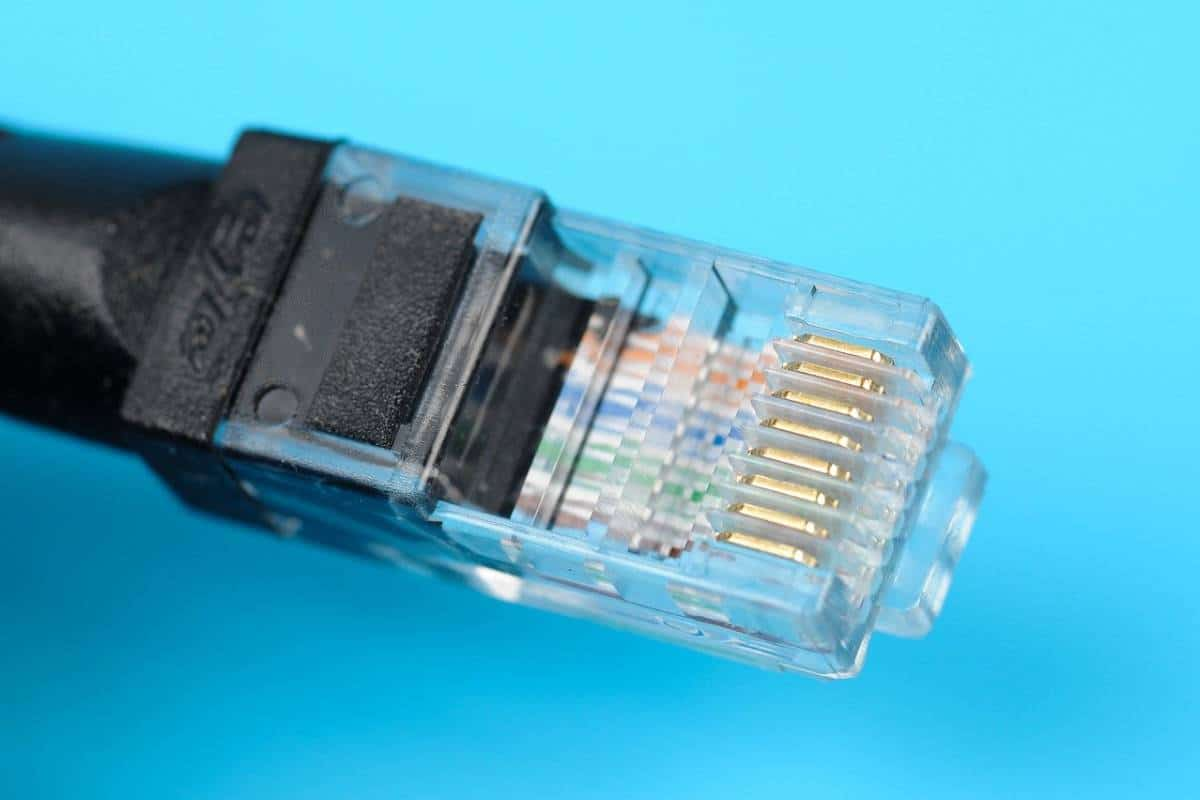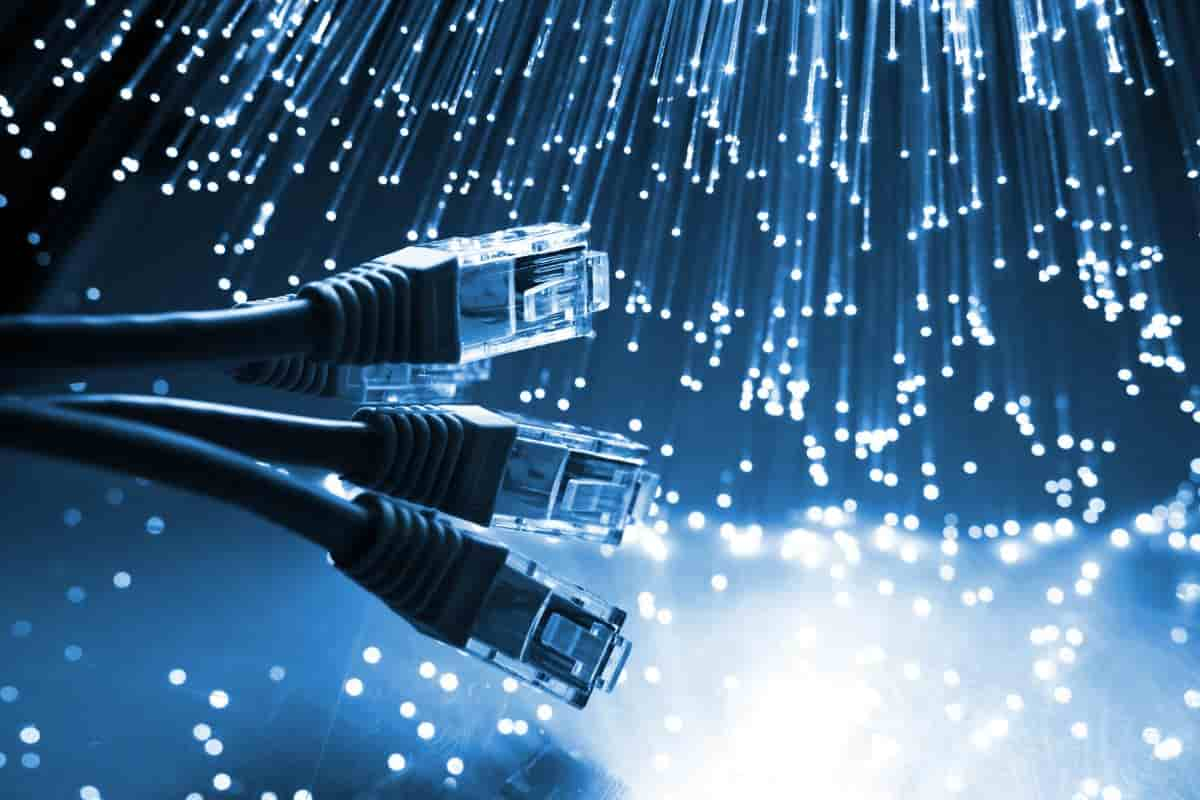RJ45 is one of the favorite connectors which is used in an ethernet cable for wiring and connecting systems. There are a lot of things and information about this cable to know. So, we will discuss different aspects of the RJ45.
ethernet cable categories
One contributor to the meteoric rise in demand for data and communication services all over the world has been the widespread adoption of modular electrical connectors. The RJ45 connector is among the most common forms of modular devices, making it one of the most popular types overall. AT&T, in the 1960s and 1970s, invented the modular connector system in order to replace cumbersome phone connectors and the labor-intensive installation process that went along with them. This information was presented in a previous post on this site. This new connection system included an easy, speedy, and convenient setup that could be adjusted on-site by a specialist or installed at the customer's house by the user themselves. Installation could take place in any location. The series has grown over the years to include essentials for data communication, such as the RJ45, which was designed specifically for use in the context of computer networking. In point of fact, Ethernet Connectors are more generally referred to as RJ45 Connectors. What is meant by the term "RJ45 Connector"? An RJ45 connector is a typical type of modular connecting device that, when combined with a cable, may supply various electronic devices and systems with data transmission service. The FCC classified the many different connectors that were produced utilizing this approach as part of the Registered Jack (RJ) system in 1976, which is what gave rise to the RJ label. This was done to verify that the consumer equipment and the hardware used by the phone company were compatible with one another. The RJ system encompasses the actual connector, in addition to the wiring layouts and signal particulars. In the same way as other modular connectors, RJ45 devices include metal contacts that are separated from one another by insulating plastic channels. The channels are designed to be inserted into a socket of the same shape, and the connectors have a tab that locks them into position, making them secure but also allowing them to be removed. Internally, RJ45 devices feature 8 pins and 8 wire positions, which allow them to accommodate 4 twisted wire pairs. These pins and places are utilized to handle signals or power. This 8-pin configuration of an RJ45 is comparable to that of 8P8C connectors; however, genuine RJ45 connectors include a tab that prevents the device from being inserted into a compatible socket in any orientation besides the one that it was designed for. 
ethernet cable wiring
This prevents an improper wiring connection from occurring. As a result, one variety of an 8P8C connector is known as an RJ45. However, in everyday use, the majority of 8P8C connectors are referred to as RJ45, even if this designation is not entirely correct. You can use 8P8C connectors in RJ45 sockets, however, you cannot use RJ45 connectors in 8P8C connectors. RJ45 Identifiable Characteristics and Capabilities RJ45 connectors incorporate the fundamental properties of modular connectors, which are as follows: low cost, solderless assembly of connector and wiring, rapid production of custom cables, easy insertion and removal, easy field assembly with simple tooling, and the capacity to customize cables on-site. Because sockets (also known as receptacles) can be oriented in either a vertical or horizontal plane, they can be utilized in a wide variety of contexts. In addition to this, RJ45 connectors are equipped with the orientation tab that was previously described to prevent erroneous wiring. Because of the 8-pin configuration of their connectors, they are also suitable for use in applications that are more demanding and data-intensive. The following are some examples of other available features: Shielding, which serves to mitigate the impact of EMI and RFI The process of keying, which ensures correct insertion Multiple mounting options, including panel, board, surface, and through-hole techniques. Various mounting capabilities. Displays and indicators - to indicate the state of the connection. Integrated magnetics, which enables improved shielding in addition to improved current protection. 
ethernet cable wiring
High Availability, or Hi-Rel, is intended to safeguard both the hardware and the connection. Standards that are Appropriate for the RJ45 Connector RJ45 connectors fall under the purview of a number of different engineering standards, depending on the context in which they are used. RJ45 devices are subject to the specifications laid out in ANSI/TIA 1096-A, which governs their fundamental physical dimensions, mechanical characteristics, and contact points. RJ45 wiring and pinouts are covered by the fundamental wiring standards known as T-568A and T-568B. The IEEE standards 802.3at, 802.3af, and 802.3bt address the specifications and details of Ethernet for power over Ethernet (PoE) devices. PoE devices are those in which the connector feeds the end device with an electrical current. The data interface bus structure that is utilized with RJ45 devices is outlined by IEEE 1394. There are a number of different standards that cover the cables or wire that is used with RJ45 devices, and once again, this is primarily determined by the particular application being utilized. In the following sections, we will discuss several of these standards in greater depth. Applications Currently Being Made of RJ45 Devices  An internet-enabled device (like a PC), together with another network device (such as a server, router, modem, smart TV, gaming console, and other devices that use the Ethernet protocol), can be connected with the help of an RJ45 device. This is the case in the majority of cases. Ethernet networks are prevalent in a variety of settings, including professional offices and private homes. Hardwiring with RJ45 devices enables data transfer at higher speeds while maintaining stability and security. This makes these devices appealing for usage in industry and on the factory floor. In data transmission applications that subject the system components to elements such as moisture, dust, vibration, chemicals, or mechanical stress, the ruggedized RJ45 technology is finding an increasing amount of use. This is one of the many applications where its use is growing. The connectors have a variety of additional characteristics, such as boots and strain reliefs, that enables for the performance required to survive in these different settings. RJ45 and Ethernet were used. Simply put, Ethernet is a method for connecting computers and various other devices to one another inside the same physical location. It permits data transfer via a Local Area Network (LAN) or Wide Area Network (WAN) and connects those networks through cable, making it possible for those networks to communicate with one another. In the 1980s, the Institute of Electrical and Electronic Engineers (IEEE) established the Ethernet standard, which is now the most widely used local area network (LAN) technology in use all over the world.
An internet-enabled device (like a PC), together with another network device (such as a server, router, modem, smart TV, gaming console, and other devices that use the Ethernet protocol), can be connected with the help of an RJ45 device. This is the case in the majority of cases. Ethernet networks are prevalent in a variety of settings, including professional offices and private homes. Hardwiring with RJ45 devices enables data transfer at higher speeds while maintaining stability and security. This makes these devices appealing for usage in industry and on the factory floor. In data transmission applications that subject the system components to elements such as moisture, dust, vibration, chemicals, or mechanical stress, the ruggedized RJ45 technology is finding an increasing amount of use. This is one of the many applications where its use is growing. The connectors have a variety of additional characteristics, such as boots and strain reliefs, that enables for the performance required to survive in these different settings. RJ45 and Ethernet were used. Simply put, Ethernet is a method for connecting computers and various other devices to one another inside the same physical location. It permits data transfer via a Local Area Network (LAN) or Wide Area Network (WAN) and connects those networks through cable, making it possible for those networks to communicate with one another. In the 1980s, the Institute of Electrical and Electronic Engineers (IEEE) established the Ethernet standard, which is now the most widely used local area network (LAN) technology in use all over the world. 
ethernet cable color code
This standard is known as IEEE 802.3. It outlines the rules for creating an Ethernet network (connections), the needed number of conductors for a connection, the desired level of performance, and a framework for the transfer of data. Ethernet technology is widely used because it strikes a good mix of ease of installation, speed, cost, and support for a variety of network protocols. This has led to its widespread adoption. Connectors of the RJ45 variety are the industry standard for usage in the installation of networks. What exactly is the EtherCAT? Ethernet for Control Automation Technology is what you'll hear referred to as EtherCAT. It was first implemented in 2003, and the standard that defines it is called 61158 from the International Electrotechnical Commission (IEC). It is a network protocol that offers a great degree of flexibility and is utilized by the business sector for real-time factory automation, test and measurement, and other applications. It runs at a rapid pace and is quite effective in its operation. Once more, RJ45 connectors are utilized in the process of putting an EtherCAT network into operation. There is no need for any additional specialized hardware. In an EtherCAT network, each device has two RJ45 ports; one of these ports is connected to the node in the network that came before it, and the other one is connected to the node that will come after it. Because of this, bandwidth can be utilized effectively. RJ45 and Power Over Ethernet (PoE) are abbreviations for. Connectors that are modular, like as the RJ45, have the additional benefit of being able to transmit signals as well as provide electrical power to the devices that are being connected. Power over Ethernet, also known as PoE, is a method that eliminates the need for separate power wiring by supplying direct current (dc) power to devices over the unused twisted pairs that are found in Ethernet cables. The Power over Ethernet standard, also known as PoE, is defined by IEEE standard 802.3af and subsequent variants, which have enhanced the power delivery. The use of Power over Ethernet (PoE) has increased rapidly due to the significant cost reductions afforded by the elimination of the requirement for separate electrical lines, outlets, and installation fees. It also provides versatility because electronic gadgets do not have to be placed in close proximity to power outlets. Additionally, it is made to be safe, trustworthy, and scalable in its design. Technical Considerations Regarding the RJ45 Board Layout and Specifications If you are developing a device that will employ RJ45 connectors and interface with an Ethernet network, there are several technical issues that you may or may not need to take into account depending on how involved you are in the design process. At the board level, the focus is on minimizing electromagnetic interference (EMI), preserving signal integrity, and ensuring electrical signal isolation. Without diving too far into the specifics of the circuit design, it is important to pay attention to the length of the traces and where they are located on the board. 
ethernet cable pinout
In addition, magnetics should be isolated and maintained in a location that is as close as feasible to the RJ45 connectors. In a perfect world, RJ45 connections with inbuilt magnetics would be the ideal option for reducing electromagnetic interference (EMI), which will be covered in greater detail below. It is also necessary to take into consideration the connectors' physical positioning on the board. Connectors with an RJ45 plug can be surface-mounted, through-hole mounted, panel-mounted, or drilled into a board. They are also available for panel mounting. The Pinouts of an RJ45 Connector The assignment of each of the numerous contacts contained within the connector is referred to as the pinout. At order to ensure the efficient operation of an Ethernet network, the wires, which are color-coded, must be placed into the RJ45 connector in the appropriate pinout places. There are RJ45 pass-through connectors available, which make it possible to feed the wires through the connector and then trim them while performing the crimping operation. This facilitates easier alignment. T568A and T568B are the two different standards for the RJ45 pinout. These establish the structure of the eight wires in the connector, and each has its own color scheme that must be adhered to in order for the connector to function properly. Backward compatibility with previous wiring standards is provided via the T568A standard. The T568B standard provides improved signal isolation and noise protection than its predecessor. In an Ethernet network, anyone will function properly. The kind that should be used is determined by the specific requirements of your design as well as whether a straight-through cable or a crossover cable is being utilized. Each end of a straight-through cable (also known as a patch cable) adheres to the same wiring standard. A T568A connection is found at one end of a crossover cable, while a T568B connection is found at the other end. Crossover cables are utilized to link devices that are of the same type. 
ethernet cable speed
Flattened cables that have been rolled or rolled over can connect devices to the console port of a network switch. They are not responsible for the transmission of data and are just used to establish an interface. The term "loopback," which refers to a connection that enables a computer to communicate with itself, is another one that you might come across. Diagnostics, troubleshooting, and connecting with servers can all be accomplished with its help. Last but not least, a T1 is a dedicated line that runs all the way from the telecom service provider to the end user. It is able to carry voice as well as data, and it provides faster rates. T1 lines are still occasionally put into operation, although their prevalence in today's networks is significantly lower than it was even ten to fifteen years ago. 
